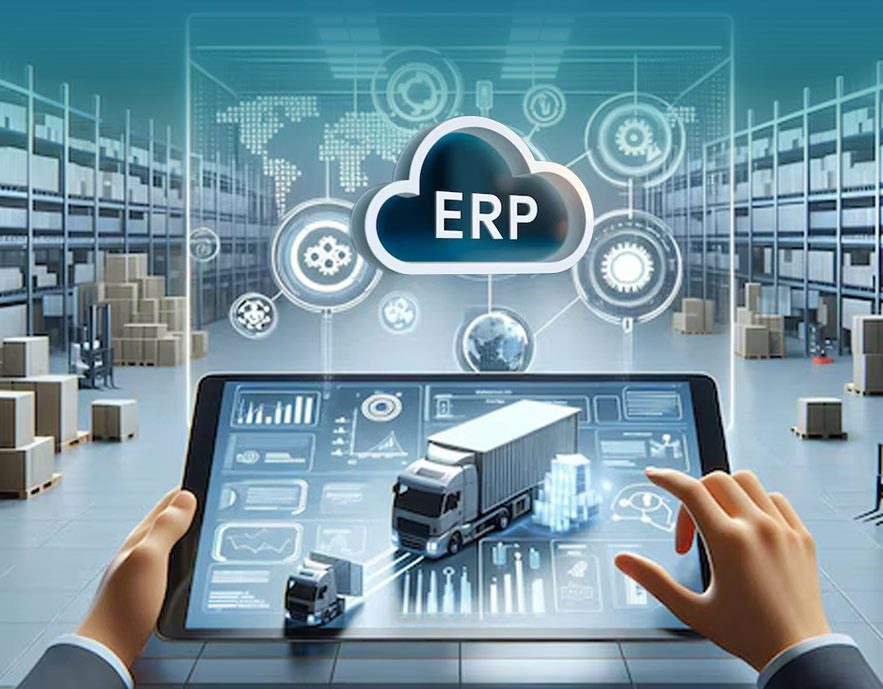August 21, 2024

Logistics is a department often seen as disorganized and neglected when it comes to digitization, especially in India, where it’s often met with a casual ‘Ho jayega’. However, as consumer demands evolve rapidly and e-commerce companies rise, the need to digitise logistics—even for small businesses—has grown significantly.
In today’s rapidly evolving logistics landscape, small and medium-sized enterprises must continually optimise transport operations while keeping costs low. A Transportation Management System (TMS) can offer a solution by providing tools to streamline and manage logistics effectively. For SMEs to fully benefit from a TMS, it needs to be tailored to their specific needs and seamlessly integrated with their existing systems. Here’s how an SME can successfully adopt a TMS for logistics.
A Transportation Management System (TMS) is crucial for planning, executing, and optimizing the physical movement of goods. It offers real-time visibility, optimizes routes, reduces transportation costs, and enhances overall efficiency. By leveraging technology to streamline logistics, a TMS helps small and medium-sized enterprises (SMEs) compete more effectively against larger companies, levelling the playing field.
The first step in adopting any new system is selecting the right one; choosing TMS is no exception. Businesses need to focus on finding a system that will align with their needs so that it can easily scale if necessary while still being user friendly. Some of them include;
Customization – Make sure your TMS can be adjusted to satisfy your unique needs during transportation processes.
Scalability – Ensure that your TMS has capacity to accommodate more business volumes in future as well as new service offerings.
Integration Capabilities – Your chosen TMS should seamlessly integrate with your existing systems, such as ERP, WMS (Warehouse Management System), and CRM, to ensure smooth data flow and operational efficiency.
A one-size-fits-all approach doesn’t work for supply chain management systems, whether for large corporations or small businesses. SMEs need to customise their TMS to address the specific processes and challenges they encounter. Here’s how this can be achieved:
A fully integrated TMS is critical for a smooth running logistics operation. Such integration enables a seamless flow of data enhancing visibility while minimising errors. Consider the following:
API Integration – Ensure your chosen TMS offers robust API capabilities for easy connection with other critical systems, such as ERP and WMS.
Data Synchronisation – Plan for seamless data synchronisation between existing platforms and the TMS, ensuring real-time updates across various interfaces.
Automated Workflows – Leverage integration options to automate key tasks like order fulfilment, shipment tracking, and invoicing.
Implementing a new TMS isn’t just about the software itself; it’s also crucial to train people to use it effectively. For SMEs, focusing on training and change management is key to a smooth transition from old to new processes. At Spinclabs, we excel in this area by providing:
User Training: Tailored training programs for various roles, from planners and dispatchers to drivers and customer service representatives.
Ongoing Support: Continuous support through help desks, training refreshers, and user manuals to tackle any challenges users might face during and after the system rollout.
After the implementation of TMS, it is vital to keep track of its performance and effects on your logistics. Use key performance indicators such as on-time delivery rates, transportation costs, and route efficiency to assess how well the system is functioning. Periodically review these metrics, identify issues from data obtained thereby resulting in an improved TMS.
Adoption of a Transportation Management System (TMS) by SMEs operating in the logistics industry will strategically boost transportation efficiency, minimise expenses, and enhance customer satisfaction. Such firms can therefore implement a customised integrated TMS capable of meeting their unique needs as well as ensuring that goals are realised through effective usage. Given that customization, integration, and training can be accomplished accordingly, a TMS becomes one of the most effective tools for facilitating growth and success in logistics.
Why does it feel like your logistics budget has a secret escape plan? One minute,…
Read MoreIn India, edible oil is one of the most essential staple products, manufactured largely by…
Read MoreThe digitization process has been rapidly accelerating, particularly in recent years with the mass introduction…
Read MoreIn the heart of the UAE where global trade routes converge, a revolution is underway.…
Read MoreThe world is going green, and transportation needs to catch up. In Dubai, where the…
Read MoreIn today’s fast-paced logistics world, fleet management is evolving beyond basic GPS tracking. With the…
Read MoreTechnology is transforming logistics in a profound way, making it one of the largest users…
Read MoreThe logistics landscape is evolving rapidly, with technology transforming every facet of the supply chain.…
Read MoreIn today’s fast-paced business environment, the ability to deliver goods efficiently and accurately is paramount.…
Read MoreLogistics is a department often seen as disorganized and neglected when it comes to digitization,…
Read MoreEvery logistics service provider is deeply involved in numerous operational activities and the handling of…
Read MoreIn today's fast-paced world, where consumer needs are constantly evolving, transport owners are working tirelessly…
Read MoreThe Open Network for Digital Commerce (ONDC) is a groundbreaking initiative by the Government of…
Read MoreWhat is ULIP? The Unified Logistics Interface Platform (ULIP) is a major initiative under PM…
Read MoreShipment visibility, a term that’s becoming increasingly significant in logistics, refers to the ability to…
Read MoreTransport Management Solutions can be challenging for any enterprise involved in manufacturing or distributing goods…
Read MoreTransportation has been integral to human civilization for centuries. Goods have been transported on donkeys,…
Read MoreTransport management solutions are essential for running a smooth and efficient business that relies on…
Read MoreFleet management solution are really important for any business that uses vehicles. They help you…
Read MoreThe realm of logistics poses multifaceted challenges, each requiring a nuanced solution. These challenges span…
Read More